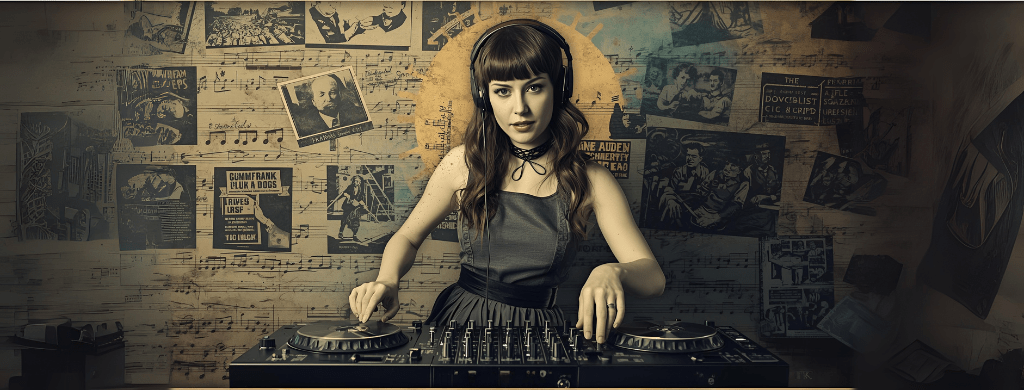
Every Drum & Bass Subgenre You Need to Know (2025 Edition)
What Is Drum & Bass? (A Quick Intro)
Drum & Bass isn’t just a genre—it’s an ecosystem. Born from the jungle rave era of early ’90s London, it’s splintered into dozens of subgenres that stretch from soulful liquid rollers to neurofunk’s sci-fi brutality. Each lane has its own culture, its own sound, and its own heroes.
Whether you’re new to D&B or a die-hard head, knowing the difference between foghorn jump-up, Brazilian sambass, and halftime hip-hop hybrids will level up how you hear the music. This guide breaks down every Drum & Bass subgenre in 2025—what it sounds like, who made it iconic, and the essential tracks you need to hear.
Drum & Bass Subgenres List (2025)
Jungle (aka Old-Skool Jungle)
Sound: Turbocharged breakbeats (Amen, Think, Apache), big subs, samples from reggae, hip-hop, and rave; raw, high-energy, and breakbeat-led. Jungle splintered from breakbeat hardcore in the early ’90s and set the foundation for modern D&B.
(Source 1) (Source 2)
Start here:
– Shy FX — “Original Nuttah” (1994)
– LTJ Bukem — “Horizons” (1995)
– Omni Trio — “Renegade Snares (Foul Play VIP)”
Ragga Jungle
Sound: Jungle with heavy dancehall/ragga influence—patios vocals, reggae samples, sound-system swagger. A crucial early branch that spotlighted MC culture inside jungle.
(Source 1)
Start here:
– M-Beat & General Levy — “Incredible”
– Congo Natty — “Junglist”
– Shy FX — “Everyday”
Jump-Up (incl. “Foghorn” era)
Sound: Party-forward basslines built to jump—bouncy leads, cheeky samples, simple but heavy drops. The modern “foghorn” wave leans on long, brassy bass notes that honk like a ship’s horn (think Serum/Voltage/Benny L).
(Source 1) (Source 2)
Start here:
– DJ Hazard — “Bricks Don’t Roll”
– Macky Gee — “Tour”
– Benny L — “Low Blow”
Liquid Drum & Bass (aka Liquid Funk)
Sound: Soulful, melodic, and rolling—vocal hooks, jazz/soul chords, musical basslines. Popularized in the 2000s; often called “liquid funk.”
(Source 1)
Start here:
– High Contrast — “If We Ever” (feat. Diane Charlemagne)
– Calibre — “Even If”
– Netsky — “Memory Lane”
Intelligent / Atmospheric / Ambient Jungle
Sound: Airy pads, jazz chords, deep subs; fewer edits, more space—music for heads and late nights. LTJ Bukem/Good Looking & the “Speed” nights defined it.
(Source 1)
Start here:
– LTJ Bukem — “Music”
– Seba — “Painted Sky”
– Blu Mar Ten — “By The Time My Light Reaches You I’ll Be Gone”
Jazzstep
Sound: D&B with overt jazz DNA—sax riffs, Rhodes, jazz harmony; emerged mid-’90s.
(Source 1) (Source 2)
Start here:
– Alex Reece — “Pulp Fiction”
– Peshay — “Miles From Home”
– EZ Rollers — “Tough At The Top”
Techstep
Sound: Mid-’90s pivot to colder, sci-fi-scorched tones; metallic reeses, steely drums; birthed on labels like No U-Turn/Moving Shadow (Ed Rush, Optical, Trace, Dom & Roland).
(Source 1)
Start here:
– Ed Rush & Optical — “Bacteria”
– Dom & Roland — “Thunder”
– Trace — “Mutant Revisited”
Neurofunk (aka Neuro)
Sound: The evolutionary step from techstep—slick, hyper-engineered bass design, funk in the syncopation, futuristic gloom. Late ’90s London roots; matured via artists like Noisia, Phace, Black Sun Empire, etc.
(Source 1)
Start here:
– Noisia — “Stigma”
– Black Sun Empire — “Arrakis”
– Phace — “Vitreous”
Darkstep
Sound: Aggro tempos, dystopian atmosphere; pulls from dark ambient/industrial and the harder edges of D&B.
(Source 1)
Start here:
– Technical Itch — “The Ruckus”
– Limewax — “Everything”
– Current Value — “Dark Rain”
Hardstep
Sound: Grittier, punch-first drums and simple, driving riffs—an earlier “hard” branch distinct from techstep/neuro.
(Source 1)
Start here:
– Dillinja — “Hard Noize”
– DJ Hype — “Rinse Out”
Hardstep
Sound: Grittier, punch-first drums and simple, driving riffs—an earlier “hard” branch distinct from techstep/neuro.
(Source 1)
Start here:
– Dillinja — “Hard Noize”
– DJ Hype — “Rinse Out”
Rollers (style)
Sound: Long, hypnotic basslines that roll; emphasis on groove over switch-ups. You’ll hear rollers across liquid, deep, and jump-up sets (Break, DLR, Alix Perez, Serum). (Rollers are a practice/style across D&B rather than a strict sub-genre.)
(Source 1)
Start here:
– Break — “Keepin’ It Raw”
– Serum — “Species”
Minimal / Deep & The Autonomic Movement
Sound: Stripped drums, dub-space, and melancholy pads—less is more. dBridge & Instra:mental’s Autonomic era (captured on Fabriclive.50) codified the minimal/experimental side around 2009–10.
(Source 1) (Source 2)
Start here:
– Instra:mental — “Watching You”
– dBridge — “Wonder Where”
– ASC — “Porcelain”
Halftime (85/170)
Sound: The D&B palette at half-time: hip-hop swagger at ~85 BPM (170 grid), negative space, sub pressure. Ivy Lab helped popularize the sound mid-2010s via their 20/20 imprint.
(Source 1) (Source 2) (Source 3)
Start here:
– Ivy Lab — “Magikess”
– Alix Perez — “U”
Sambass (Brazilian D&B)
Sound: Samba/bossa rhythm DNA with liquid warmth; pioneered in Brazil by DJ Marky & peers.
(Source 1)
Start here:
– DJ Marky & XRS — “LK (Carolina Carol Bela)”
– Bungle — “Down to Earth”
– Patife — “Sambassim
Drumfunk (aka Edits / Choppage)
Sound: Hyper-detailed breakbeat science—endless micro-edits, minimal synth work, drums front-and-center. Paradox is the don.
(Source 1) (Source 2)
Start here:
– Paradox — “Scorpius”
– Paradox — “Crate Logic”
– Fanu — “Siren Song”
Dancefloor
Sound: Big hooks, festival-scale drops, polished sonics; bridges D&B with pop-adjacent songwriting while keeping 174 energy. (Sometimes just called “mainstage” or “dancefloor.”)
Start here:
– Wilkinson — “Afterglow”
– Sub Focus — “Rock It”
– Dimension — “UK”
Drumstep (adjacent)
Sound: D&B tempo with halftime drums; a crossover that flirted with dubstep audiences in the early 2010s. (You’ll also hear “halftime” used more broadly inside D&B.)
(Source 1)
Start here:
– Feint & Laura Brehm – “We Won’t Be Alone”
– Excision & Pegboard Nerds – Bring The Madness
Crossbreed (Hardcore × D&B)
Sound: Industrial hardcore kicks fused with D&B speed/aggression—often darker than darkstep. Mid-2000s via labels like PRSPCT/Yellow Stripe.
(Source 1)
Start here:
– The Outside Agency — “Prepare To Die”
– Switch Technique — “The Storyteller”
Drill ’n’ Bass (IDM-leaning offshoot)
Sound: IDM artists hijack jungle physics: absurdly chopped drums, brain-melting edits; often not for dancing—prefigures breakcore.
(Source 1)
Start here:
– Aphex Twin — “Bucephalus Bouncing Ball”
– Squarepusher — “Come On My Selector”
– µ-Ziq — “Hasty Boom Alert”
Breakcore (cousin territory)
Sound: Maximalist chaos—jungle/hardcore/IDM executed at breakneck speed with extreme edits; raggacore is one offshoot.
(Source 1)
Start here:
– Venetian Snares — “Hajnal”
– Bong-Ra — “666 mph”
– Enduser — “2/3”
How to Use This Guide
- Follow the lineage: Jungle → techstep → neuro/dark side tells one story; jungle → intelligent/liquid tells another. The beauty is in the cross-pollination.
- Clock the drums: 2-step, breaksy, or halftime? Your ear for drum programming will often tell you the sub-lane faster than the bass.
- Roll deep on labels: Moving Shadow/Good Looking for the roots; Virus/No U-Turn for techstep; Hospital/Spearhead for liquid; Critical/Exit for deep/minimal; PRSPCT/Yellow Stripe for crossbreed.
Final Thoughts: Drum & Bass in 2025
Drum & Bass isn’t one sound—it’s a spectrum. From the roots of jungle to the polished weight of liquid, from neuro’s alien bass design to the halftime swagger of Ivy Lab, each subgenre pushes the culture forward in its own way.
The beauty of D&B in 2025 is its range: underground nights built on hypnotic rollers sit right next to festival anthems and sambass sunshine. The scene keeps mutating, and that’s exactly why it stays alive.
If you came here to find your lane, use the playlists and examples above as a roadmap. Whether you’re here for the weight, the groove, or the vibes—you’re part of the movement.
What are the main subgenres of Drum & Bass?
The most recognized subgenres include Jungle, Liquid, Jump-Up, Neurofunk, Techstep, Halftime, Sambass, Drumfunk, and Darkstep, plus niche offshoots like Crossbreed and Drill ’n’ Bass.
What’s the difference between Jungle and Drum & Bass?
Jungle grew out of UK rave and breakbeat hardcore in the early ’90s, with heavy reggae/dancehall samples and raw drum breaks. Drum & Bass evolved as a sleeker, more technical version, keeping the speed (160–180 BPM) but expanding into diverse subgenres.
What is the most popular style of Drum & Bass in 2025?
Liquid remains a crowd favorite for festivals and radio, while Jump-Up dominates rave floors, and Neurofunk leads the underground in terms of bass innovation.
